
Branching Path: Armored Core VI is an Armored Core game that will make Armored Core fans happy
Time is a fickle thing. All the way back in January 2022, I wrote about the Armored Core series in response to the rumors of a new entry before Armored Core VI: Fires of Rubicon was later officially revealed that December. At the time, there were equal amounts of speculation and concern about whether FromSoftware would adapt its long-running mech series into the more popular “Soulsborne” formula in order to appeal to a broader fanbase that From has cultivated over the last decade or so.
Even with all the pre-release footage shown of this new Armored Core, some people understandably called into question whether it retained the series’ identity, or did it veer into a new direction to cater to a different, wider audience.
I’ve finished two playthroughs of the full release of Armored Core VI: Fires of Rubicon. As someone who has played all the Armored Core games and all of FromSoftware’s Souls games, I can safely say this is an Armored Core game that will make Armored Core fans happy.
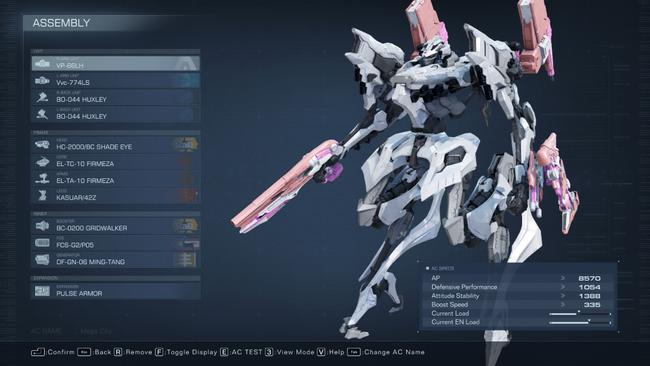
Up until the release of Armored Core VI, there were numerous discussions over what defines an Armored Core game. Naturally, people often choose the first Armored Core they played as the anchor point for what Armored Core is to them. There’s nothing necessarily wrong with this assessment; it reminds me of how RPG fans talk about what makes a Final Fantasy game a “real” Final Fantasy and often, they’ll refer to the first Final Fantasy they’ve played as the nexus of how they define Final Fantasy.
Armored Core is like Final Fantasy in this regard. Both long-running series constantly evolve over time. Similar to how Final Fantasy reinvents itself with every mainline entry, Armored Core has gone through multiple generations that have taken the series in different directions once and again.
While the structure and flow of Armored Core games have varied over the years, they all share a simple foundation: Armored Core has players deploy on missions and allows them to build or tweak their giant robots throughout the game.
That’s what makes Armored Core well, Armored Core - nothing more, nothing less.
Everything else is malleable.

Armored Core VI feels like a ‘greatest hits’ celebration of the series, and it heavily embraces the first three Armored Core generations that spanned between the PS1 to PS2 eras as its foundation. A lot of its design principles remind me of how Armored Core: Last Raven was the culmination of the series’ best ideas at that point and expanded its narrative structure with multiple routes and endings.
There are elements of every previous Armored Core generation present in Armored Core VI, and it’s all presented in a streamlined fashion. The new Assault Boost feature is effectively a more versatile Over Boost. Exceed Orbit funnel-type weaponry makes a return, along with Quick Boosts to rapidly shift an AC’s direction mid-boost. A weapon bay can be installed onto ACs to allow them to quick-swap to another primary weapon mounted on their back without purging weapons. There are other numerous features that can trace their legacy back to older Armored Core titles.
That isn’t to say that Armored Core VI is lacking its own set of ideas. The most notable new gameplay feature here is the stagger bar that both you and your enemies possess. Getting hit with concentrated gunfire and significant explosive hits will rapidly fill up this stagger bar; once it fills up, the staggered unit will be stunned momentarily and anything that hits them during this timeframe will be counted as direct hits, so everything will deal bonus damage. Think of this mechanic’s implementation more along the lines of Final Fantasy XVI, rather than Sekiro: Shadows Die Twice.

Everything about this new generation of Armored Core revolves around this stagger system. Fights will often last long enough to allow for multiple staggers and enemies are astoundingly aggressive in Armored Core VI. Expect erratic movement patterns as foes constantly dump their entire arsenal into you at any moment they get. Staying still for even a second can cause a stagger instantaneously with the number of attacks they’re firing off at any given time.
This works in your favor too, though. Weapons all have new stats that affect not only how much stagger damage they do upon impact, but also the rate of stagger bar degradation they incur. For instance, an explosive grenade launcher may inflict a ton of stagger damage upon a direct hit and as a trade-off, the amount of stagger it deals drains faster unless you continue to follow it up with continuous gunfire. On the other hand, a laser rifle may deal less stagger impact damage per hit, yet the amount of stagger it deals lingers substantially longer than the grenade launcher did, so there isn’t as much pressure to keep the heat on the opponent immediately.
Before delving further into the ebb and flow of battles in Armored Core VI, another new feature worth mentioning now is that players have three repair kits to heal a portion of their AP (HP) at any time during missions. These repair kits, and your ammo, can’t be replenished unless a stage has a designated supply pod drop, which is usually only reserved for incoming boss battles or significant encounters. They’re also replenished upon restarting from a checkpoint, should you happen to reach one before dying. People can even switch out their ACs entirely upon death and reassemble them to better accommodate for the challenges ahead.
I know some Armored Core purists will preemptively lament about these features making the game too easy. Sure, they help a lot more people progress through the stages at their own pace and I don’t see that as a negative thing, because the challenge of attaining S-ranks is still there.
After finishing a stage once, it gets added to the mission replay list, in which you’ll get graded based on your performance. This is where Armored Core purists can challenge themselves, because all of these new ‘handy’ features are counted against your performance grade, due to the expenses they incur. Repairing comes at a cost, ammunition comes at a cost, and of course, restarting from a checkpoint rolls over all those costs. You’re not only pushed to perfect stages by minimizing the amount of damage you take, you must also think about how efficiently you’re completing them in relation to your ammo cost, too.
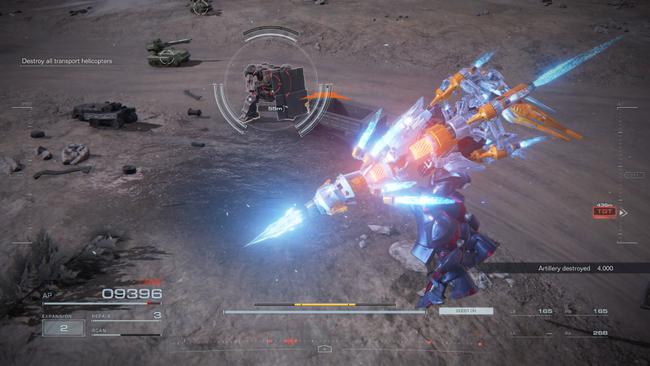
Later into the game, you’ll quickly realize that repair kits are not only a feature you can take advantage of - bosses will start healing up as well. This brings about a new feeling of tension and release as you trade blows with enemy ACs. Sometimes you’ll face off against multiple ACs at once that will heal at certain points; sometimes you’re forced to play a mission with numerous enemy encounters and no checkpoints only to be met with a fierce AC battle at the end of it.
The stagger bar radically changes up the Armored Core formula in smart ways fundamentally, yet I think this first try at its implementation is rough around the edges. There are certainly AC builds that exploit the system by chain-stunning enemies continuously, so they could barely act. Even if enemies do pop off a heal, the damage potential is ludicrously high once you start building around the stagger bar and maximizing the brief DPS windows a stagger provides.
I appreciate the stagger bar’s concept in keeping engagements intimate, but I think some of the ‘slow-burn’ builds could get lost in the process.
While we’re on the subject, let’s touch upon how difficult Armored Core VI is. Despite the comparison to Last Raven earlier, don’t worry; Armored Core VI isn’t as mind-crushingly difficult. In fact, I think Armored Core VI is on the easier side of the Armored Core difficulty spectrum, though that doesn’t mean it has its fair share of tricky missions and bosses.
Ultimately, Armored Core VI nails what’s important in an Armored Core game. It provides a healthy amount of mission variety that sometimes pushes players to alter their existing build or craft something entirely new, depending on what the mission asks of the player. Potential difficulty spikes are usually less about brute forcing a solution and more about changing up one’s approach to it.
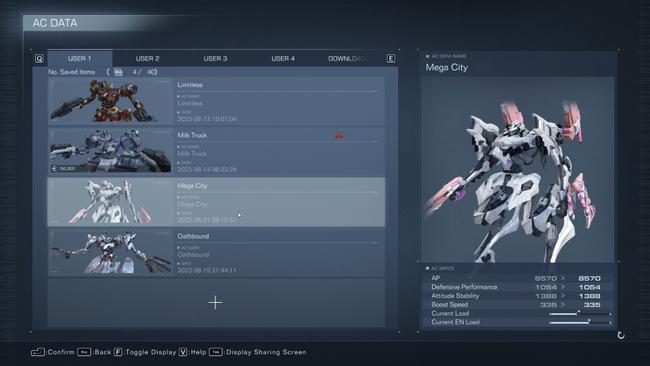
Missions are highly replayable; chasing for S-ranks isn’t the only thing to do. Most missions will have collectible memory logs that are carried by specifically marked enemies. These enemies are either usually out of the way from the main route in the mission or are carried by a tougher, optional enemy that takes a little bit more effort to beat than the other opponents. Collecting a certain amount of these loghunts raises a player’s Hunter Rank which unlocks new parts not found in the shop.
Some missions also contain hidden parts and weapons in crates that can be picked up by your AC’s scan function if you’re near them.
No Armored Core game is complete without an extensive, comprehensive garage experience for building and testing ACs. Like in previous Armored Core titles, expect to spend a lot of time buying new parts, seeing if you like them, and selling them back if it’s not getting the job done early on. Everything you buy can be sold back at 100% of its cost, so there’s no need to be frugal with money - which is also a series tradition.
Several modern features make this aspect of the game a more pleasant experience than ever before. Every single weapon has a small video that demonstrates what the weapon looks like in action; even some leg types have these, as well. Many weapons, especially energy weapons, have a more powerful shot variant or alternate firing mode when fully charged up.

Shields have gotten reworked. They’re now an active component you deploy and hold out. Upon initial deployment, they have a very brief window in which their defensive capabilities are most effective; think of this similarly to a ‘just guard’ in an action or fighting game.
Melee weapons got a lot of love in Armored Core VI. These all have different movesets; some have continuous hit follow-ups, while others can be charged up to unleash a more devastating maneuver. Honestly, unlocking them was one of my personal highlights in Armored Core VI. They all come in different shapes and sizes and you never know what to expect when you discover, unlock, or can buy a new one.
As far as the main story is concerned, it took me roughly 21 hours to finish my first playthrough of Armored Core VI. It’s a pretty standard entry in the Armored Core narrative with its own fair share of winks and nods to older players. There are a lot of events that bring a healthy dose of spectacle and flair that the Armored Core series doesn't see too often. Longtime AC players should know what to expect here as the story contains the usual amount of uneasy alliances, betrayals, plot twists, and so on - common tropes and developments found in Armored Core stories.
I appreciated that it stayed faithful to the cold nature of how Armored Core narratives play out. All of your interactions with others are depicted through communication radios and devices, rather than cutscenes; the only thing you see from those talking to you is their emblem to signify their callsign. This makes the voice acting even more impactful and memorable as a result.
It reinforces Armored Core’s unique nature in being able to establish an effective narrative without needing to know the physical appearance of who you’re talking to. Instead, you forge relationships based on a voice, callsign, and emblem alone.
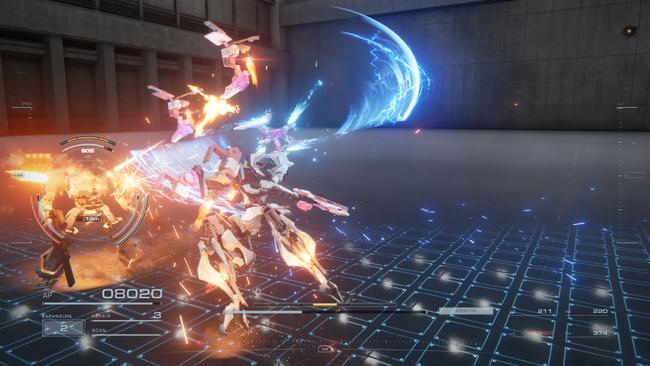
Beating the game once isn’t nearly enough to see everything the game has to offer. New Game+ automatically puts you back at the beginning of a new game, though everything is carried over.
There’ll be a couple of missions you’ll notice marked with a ‘Decision’ tag on them throughout your initial playthrough, in which you decide which one, out of the two, missions you’ll complete. Finishing one locks off the other until another playthrough.
New Game+ sees a few alterations to some existing missions too, along with even more new parts and weapons to unlock that are New Game+ exclusive. If you’ve reached the top of the Arena, New Game+ will unlock new Arena battles that lie beyond the #1 spot.
I’m still seeing new missions and story developments pop up in my New Game++ playthrough, too. There’s even a brand-new character that I only just met for the first time in New Game++, so expect Armored Core VI to have its fair share of secrets up its sleeve. If you want to see everything, expect to do multiple playthroughs and enjoy seeing the unexpected changes unfold.
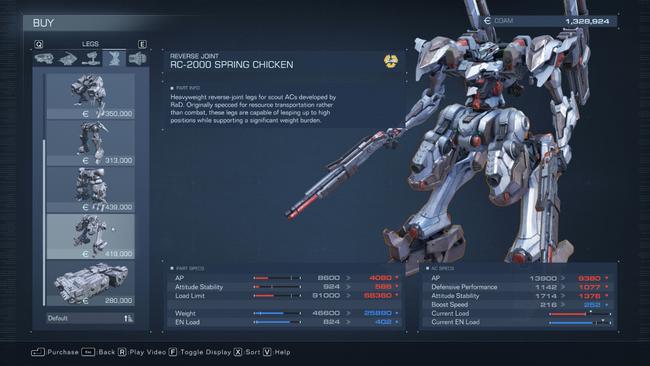
Lastly, the sound work in Armored Core VI is incredible. Series veteran Kota Hoshino returns alongside several other FromSoftware sound designers and composers to make some of the finest tunes in the Armored Core series. It retains the early generations’ grungy atmosphere, yet it sounds much clearer now with advancements in audio technology. There’s an oppressive earthiness in tracks that fit the dirty work you’re constantly being assigned. Some boss themes blew me away when I first heard them.
I want to mention the amazing work put into the sound effects of weapons as well. They sound and feel so good to fire off. Firing a fully charged linear rifle produces a satisfying reverberating pop. Fully unloading a volley of missiles into several enemies filled my ears with the sound of numerous missile fuses being lit and deployed straight into the sky ready to rain death in just a few moments. The ringing of dual gatling gun rattlings as bullet casings fly everywhere amidst the carnage was another delight of mine; the list goes on. The audio aspect of Armored Core VI was simply delectable to my ears.
With Armored Core VI, this is the series’ debut on PC. All of my time was spent on this version of the game; I was very curious to see how it controlled on a keyboard and mouse.
I was blown away.
Controlling my AC on keyboard and mouse was a dream come true. The game is fully rebindable on both controller & keyboard and mouse, so you can freely set up what’s the most comfortable setup for you. Armored Core VI felt so responsive on keyboard and mouse that I eventually stopped using the Target Assist feature entirely after the first few hours testing it out.
The Target Assist feature puts a ‘hard lock’ on a nearby enemy you’re targeting, so the camera will follow their movements if they’re close enough to you. With keyboard and mouse, I found this feature to be sluggish and usually too intrusive for my liking. Following my foes’ movements manually with the mouse was much, much faster and felt more natural to control. It is my favorite way to play Armored Core yet.
Running at 120fps consistently with no stuttering, Armored Core VI’s PC performance held up admirably well. The constant high-speed mech combat was as smooth as ever, which is a welcome change for AC veterans who have been conditioned to tolerate lackluster technical performance in older AC entries.
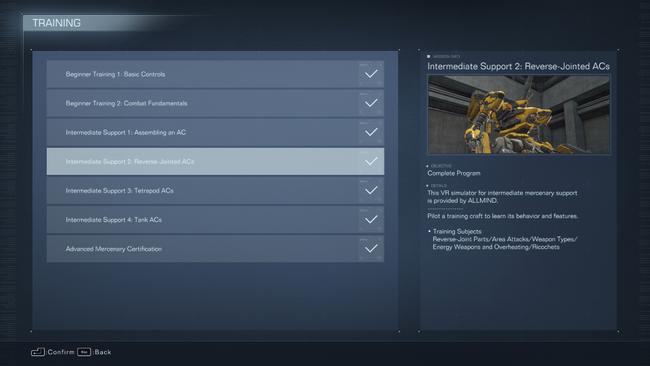
Armored Core VI: Fires of Rubicon is an Armored Core game that will make Armored Core fans happy. I hope that newcomers are able to appreciate what makes these games fun. There are numerous tutorials in Armored Core VI that break down what everything in the HUD signifies, how different leg types work, and how weapon types differ from one another. There’s even a contextual help guide throughout all the menus that carefully explain what every stat does. FromSoftware set out to make a new Armored Core game fans, and they succeeded.